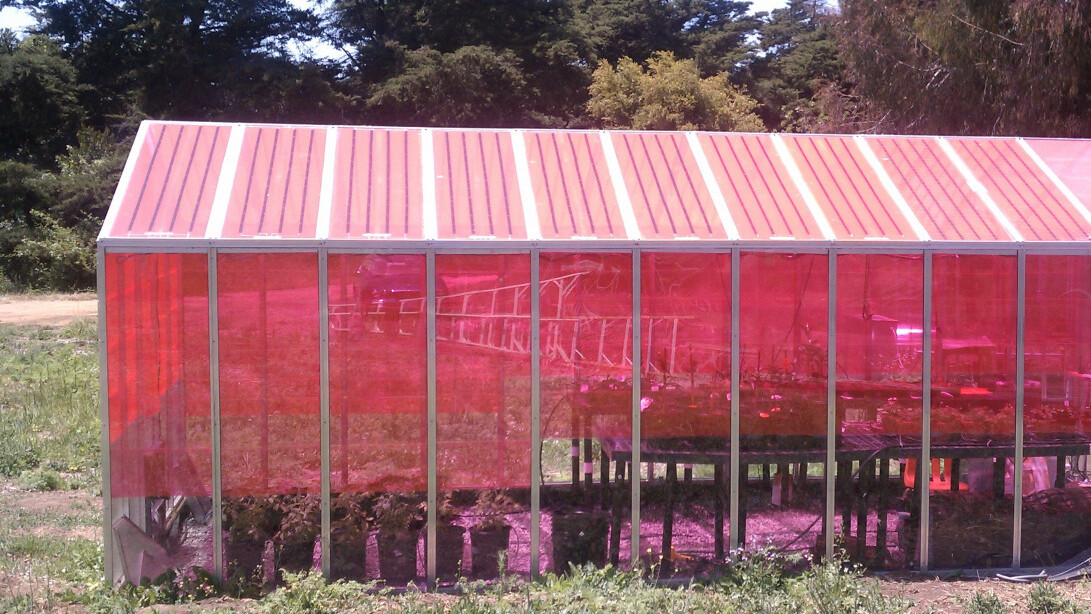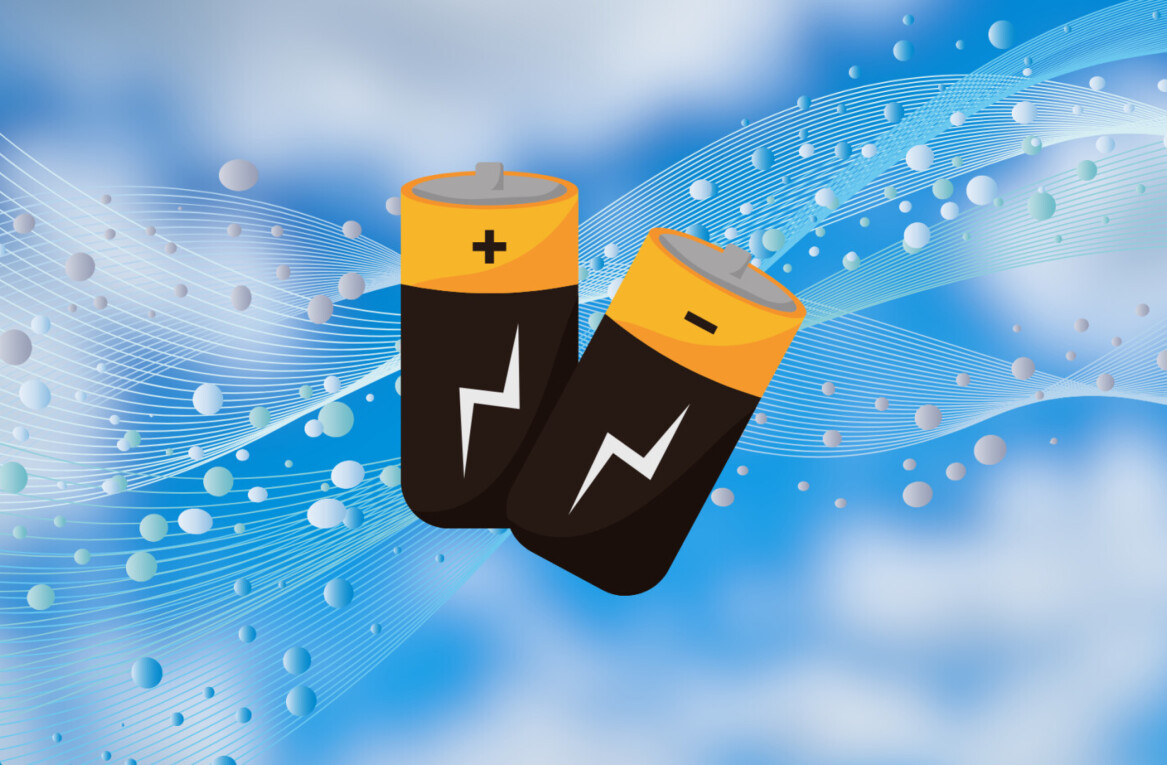Each year, greenhouses use a monstrous 18,000,000 kWh of electricity just to grow our food. To put that in perspective, that’s equivalent to the amount of carbon emitted from driving around the world 391 times. Thankfully, researchers have developed new electricity-generating greenhouses that could solve this growing problem — and better yet, they’re pink.
Invented by researchers from the University of California, Santa Cruz, the solar greenhouse technology proves it can reduce CO2 emissions, water usage and even improve the growth of some plants. Known as Wavelength-Selective Photovoltaic Systems (WSPVs), the panels are both cheaper and more efficient than traditional solar technology.
What makes the greenhouses pretty and pink is the magenta luminescent dye embedded in the transparent roof panels. The dye absorbs some of the green and blue wavelengths of light, transferring it to thin electricity-generating solar strips. The rest of the light helps the plants grow, particularly red wavelengths which are strengthened by the technology, improving photosynthesis activity in plants.
As explained in research published this week in the American Geophysical Union’s journal Earth’s Future, after multiple tests it’s been found the special pink panels do not hinder plant growth. Michael Loik, professor of environmental studies at the University of California and the lead author of the paper was notably surprised by this:
I thought the plants would grow more slowly, because it’s darker under these pink panels. The color of the light makes it like being on the Red Planet. Plants are sensitive not just to the intensity of light but also to color. But it turns out the plants grow just as well.
Researchers tested the WSPV panels on over 20 types of sprouting fruit and vegetables. While 80 percent of the plants grew at their usual pace, 20 percent were actually found to grow better under the pink panels. Further experiments found that upon measuring photosynthesis, plants needed five percent less water than they usually do under conventional glasshouses. Multiply that by all the greenhouses in the world and that’s a lot of water!

While it’s incredible that greenhouses allow us to grow plants all year round, regulating temperature, lighting, fans, and monitoring systems consumes an enormous amount of expensive electricity. With around nine million acres of land covered by greenhouses worldwide, it’s definitely time to consider a more efficient means of operating these energy-hungry setups.
With WSPV solar systems already available for purchase from Soliculture, it’s exciting to envision a future food system that’s better for our planet – and our crops. Also, it’s hard to say no to a touch of pink.
Get the TNW newsletter
Get the most important tech news in your inbox each week.





